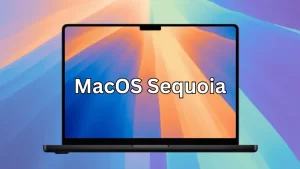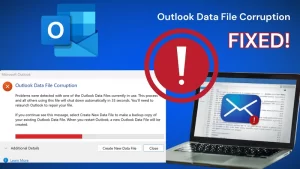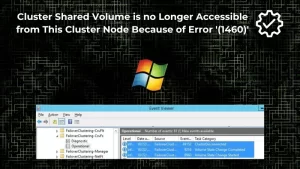The Most Useful Mac Keyboard Shortcuts to Know | Macbook Pro Sleep Shortcut
9 min read
Here in this blog, you will get the most useful Mac keyboard shortcuts to know… This would help you if Mac is your go-to-device for working online!!
It is sort of essential these days to learn keyboard shortcuts… as this helps a lot in managing the desktop.
In order to help you discover and memorize the most crucial & useful mac shortcuts, we’ve compiled them here all together in a cheat sheet:
Mac Keyboard Shortcuts Cheat Sheet
Shortcut | Action | ||
Basic Finder Actions | |||
| Cmd + N | Open new window | ||
| Cmd + T | Open new tab | ||
| Cmd + W | Close active window or Close active tab | ||
| Shift + Cmd + W | Close active window | ||
| Option + Cmd + W | Close all windows OR ¹Close all tabs except the active tab | ||
| Option + Shift + Cmd + W | Close all windows | ||
| Cmd + O | Open selected item (s) | ||
| Option + Cmd + O | Open selected item(s) and close active window or ¹active tab | ||
| Shift + Cmd + N | Create New Folder | ||
| Control + Cmd + N | Create new folder and move selected item to it | ||
| Cmd + I |
| ||
| Option + Cmd + I | Show Inspector pane for selected item(s) |
| Cmd + P | Open selected file for printing |
| Enter | Rename selected item |
| Cmd + C | Copy selected item(s) to clipboard |
| Option + Cmd + C | ²Copy pathname of selected item to clipboard |
| Cmd V | Paste item(s) from clipboard |
| Option + Cmd + V | Move selected item(s) to active location i.e. cut-paste item(s) |
| Cmd + Z | Undo last action |
| Shift + Cmd + Z | Reverse “Undo action” |
| Cmd + D | Duplicated selected item(s) |
| Control + Cmd + A | Create alias for selected item(s) |
| Option+ Control + Cmd + A | Locate original item for selected alias(es) |
| ³Space | Open Quick Look preview of selected item(s) |
| ³Cmd + Y | Open Quick Look preview of selected item(s) |
| ³Option + Cmd + Y | Open slideshow or fullscreen Quick Look preview of selected item(s) |
| Control + Cmd + T | Add sidebar shortcuts for selected item(s) |
| Control + Shift + Cmd + T | Add selected item(s) to Dock |
| Cmd + Delete | Move selected item(s) to Trash |
| Option + Cmd + Delete | Delete selected item(s) immediately |
| Shift + Cmd + Delete | Empty Trash |
| Option + Shift + Cmd + Delete | Empty Trash immediately i.e. without warning dialog |
| Cmd + E | Eject the selected disk or volume |
| Cmd + F | Open a Finder search window (search bar is activated automatically) |
| Option + Cmd + Space | Open a Finder search window even when Finder is not active |
View and Sort Options | |
| Cmd + 1 | Switch to Icon view |
| Cmd + 2 | Switch to List view |
| Cmd + 3 | Switch to Column view |
| Cmd + 4 | Switch to Gallery view |
| Control + Cmd + 0 | ⁴Sort items into Groups |
| Control + Option + Cmd + 0 | Sort items by None |
| Control + Option + Cmd + 1 | Sort items by Name |
| Control + Option + Cmd + 2 | Sort items by Kind |
| Control + Option + Cmd + 3 | Sort items by Date Last Opened |
| Control + Option + Cmd + 4 | Sort items by Date Added |
| Control + Option + Cmd + 5 | Sort items by Modified |
| Control + Option + Cmd + 6 | Sort items by Size |
| Control + Option + Cmd + 7 | Sort items by Tags |
| Option + Cmd + 1 | Clean up items by Name |
| Option + Cmd + 2 | Clean up items by Kind |
| Option + Cmd + 5 | Clean up items by Date Modified |
| Option + Cmd + 6 | Clean up items by Size |
| Option + Cmd + 7 | Clean up items by Tags |
| Option + Cmd + S | Toggle sidebar |
| Option + Cmd + T | Toggle toolbar and sidebar |
| Shift + Cmd + T | Toggle tab bar |
| Option + Cmd + P | Toggle path bar |
| Shift + Cmd + P | Toggle Preview sidebar |
| Cmd + / (Forward slash) | Toggle status bar |
| Cmd + J | Show View options for active folder |
| Shift + Cmd + . (Period) | Toggle visibility of hidden files |
| Up Arrow | Icon View, Gallery View: Select last item |
| List View: Select item above | |
| Column View: Select the last item if no item selected, the otherwise select item above | |
| Down Arrow | Icon View, Gallery View: Select first item |
| List View: Select item below | |
| Column View: Select first item if no item selected, otherwise select item below | |
| Left Arrow | Icon View: Select item on the left |
| List View: Collapse folder | |
| Column View: Select parent folder | |
| Gallery View: Select the last item if no item selected, the otherwise select first item on the left | |
| Right Arrow | Icon View: Select item on the right |
| List View: Expand folder | |
| Column View: Select child item | |
| Gallery View: Select first item if no item selected, otherwise select first item on the right | |
| Tab | Icon, List, and Gallery View: Cycle through items in the forward direction |
| Shift + Tab | Icon, List, and Gallery View: Cycle through items in the backward direction |
| Cmd + Up Arrow | Open enclosing (parent) folder |
| Cmd + Down Arrow | Select the first item or open selected item(s) |
| ⁵Cmd + [ | Go one step backward |
| ⁵Cmd + ] | Go one step forward |
Accessing Standard Finder Locations | |
| Shift + Cmd + F | Open Recents window |
| Shift + Cmd + O | Open Documents folder |
| Shift + Cmd + D | Open Desktop folder |
| Option + Cmd + L | Open Downloads folder |
| Shift + Cmd + H | Open Home folder of current user account |
| Shift + Cmd + C | Open Computer window |
| Shift + Cmd + R | Open AirDrop window |
| Shift + Cmd + K | Open Network window |
| Shift + Cmd + I | Open iCloud Drive |
| Shift + Cmd + A | Open Applications folder |
| Shift + Cmd + U | Open Utility folder |
| Shift + Cmd + G | The open dialog to jump to folder using pathname |
| Cmd + K | Open Connect to Server utility |
| Cmd + , (Comma) | Open Finder preferences |
Window Management | |
| Cmd + M | Minimize active window |
| Option + Cmd + M | Minimize all windows |
| Cmd + ` (Backquote) | Cycle through (un-minimized) windows |
| Cmd + H | Hide Finder |
| Option + Cmd + H | Hide all apps except Finder |
| Cmd + Q | Quit Finder |
Mouse-Based Shortcuts | |
| Cmd-Click | Open sidebar item in new tab or window |
| Cmd-Drag Toolbar/Sidebar Item | Add item to or move/remove the item from toolbar/sidebar |
| Cmd-Drag File/Folder | To toolbar/sidebar: Add a shortcut |
| To any location on disk: Move item there | |
| Esc | Cancel drag-and-drop action midway |
| Double-click divider in Column View | Resize the corresponding column to fit item with the longest name |
| Option + Double-Click divider in Column View | Resize all columns to fit items with the longest name in each |
| Option-Drag divider in Column View | Resize columns equally |
| Option-Click Go Menu | Reveal link to Library folder |
| ¹When the window has multiple tabs ²If multiple items are selected, the pathname of the first item will be copied. ³If no item selected, preview parent folder with Quick Look. ⁴Does not work in Gallery View. ⁵Based on tab/window history | |
Ok… so these were the Mac Keyboard Shortcuts Cheat Sheet you can know… Now have a look at some more essential & basic Mac Keyboard Shortcuts…
The most useful Mac keyboard shortcuts to know
Command-Y
People usually use QuickLook for previewing items they’re looking for…
To make use of QuickLook, you need to select an item in Finder… and then press the Space bar. This facilitates you with a preview. However, using a Mac Shortcuts, you can do this easily…
You just need to select an item and then press Command-Y.
Command-G
Command-G is a lesser-known keyboard shortcut. This is used to navigate through each instance of the item you desire to find out.
Means… suppose if you are using Command-F for finding out all the mentions of ‘Command’ on your page… and then simultaneously you tap Command-G, you will be able to navigate via each one.
Moreover, you can press Shift-Command-G for moving back to the previous mention.
Command M to minimize
You can click the little yellow dash button in the upper left corner of a window to minimize it. However, it might be easier to just hit Command M to minimize the active window on our Mac.
If you have multiple windows open then you can go for Option M to minimize all of them.
Command-Space
This Mac Keyboard Shortcut is known to a combination potent enough to change one’s life.
Command-Space invokes the spotlight. You just need to depress these keys and start typing your query.
Command-Tab
Open up application switcher… Keeping command pressed, make use of Tab for navigating to the app you hope to make use of.
Command-L
This keyboard shortcut is known to be the fastest way of making a search or navigating to a website in Safari…
Command-L – Mac Keyboard Shortcut selects the address bar:
You just need to select the proper choice, utilizing the up/down arrows on the keyboard.
Command-Option-D
This Mac Shortcut shows or hides the Dock from within most apps.
Command-Backtick
This is one of the least well-known Mac Keyboard Shortcuts, however one of the most useful ones… This combo can get used to move between open windows in the currently active app.
Control – Command-Space
Today, the usage of emoji is quite currently… Well, emojis can get inserted easily into what you write… You just need to use Control-Command-Space for opening up the Character Viewer. Here you can select and use all such symbols.
Fn Twice
Pressing function (fn) key twice launches Dictation on the Mac system.
Start speaking and then press fn once you get done.
Option-File
In Safari OS, pressing the Option key while selecting the File menu enables you to access the ‘Close other Tabs’ commands.
Note: You can try several other Safari menu items with Options depressed… This will enable you to find other commands you probably weren’t aware of.
Fn-left Arrow (or Right Arrow)
You can jump directly to the top or the bottom of a web page, using the Function key. Moreover the right (to the bottom of the page) or left (to the top of the page) arrows on the keyboard.
You can achieve a similar result utilizing Command-Up or Command-Down.
Further, a third way is to use Control-Tab and Control-Shift-Tab.
Command-Left/Right Arrows
This is one of the most prominent Mac Keyboard Shortcuts.
You are just required to hit command and the left arrow to go back a page in the browser window. Further, hit command right for going forward again.
Command + Shift + T
Using this Mac keyboard shortcut, you can open your last closed tab… This ultimately helps a lot, when you’re researching something and close a window without saving the URL.
Command + Control + Q
This is the shortcut to immediately lock the Mac system.
Option-click to toggle Do not disturb
On our Mac choose Apple menu then system preferences then click notifications. Then click do not disturb at the top of the sidebar, then options schedule to it. We can schedule Do not disturb for a time period when our Mac is in sleep or when our project screen is on. If we want to receive call notifications even when do not disturb is on, select the call tick boxes.
Option Click bar icons
The menu bar runs along the top of the screen on our Mac. Use the menus and icons in the menu to choose commands, perform tasks, and check status. We can set an option in General preferences to automatically hide the menu bar, and then it’s sown only when we move the pointer to the top of the screen.
Option-click the Apple Button
The apple key is used with a single letter key for many of the Mac’s most common actions. Apple key is also known as the command key is labeled with Cmd and quadruple loop symbol. It is used with a single letter key for many of Mac’s most powerful actions. Apple S saves in most common applications for instance, Apple P prints, and Apple T opens a new tab in our web browser.
Command spacebar for the spotlight
If Cmd + Space doesn’t work, that hotkey may be assigned to another feature on our Mac. First we verify that it is not used for Spotlight by opening Spotlight system preferences and disabling the menu keyboard shortcut under Keyboard shortcuts then spotlight.
Ok… so these were all the Mac Keyboard Shortcuts…
Note: These shortcuts can also be referred to as Macbook pro sleep shortcuts.
Now have a look at the mac keyboard shortcuts symbols…
Mac Keyboard Shortcuts Symbols
Here below some essential mac keyboard shortcuts symbols
Common Mac Symbols
- Sym: The symbol representing the key
- Key: The common name of the key
- CrossPlat?: Whether the symbol is cross-platform. If ‘No’, this means the symbol is unlikely to render appropriately outside the Apple ecosystem.
- Alt: An alternate symbol utilized in some contexts
- Alt CrossPlat: Whether the alternate symbol is cross-platform.
Besides from symbols and keyboard shortcuts, there are several Mac Shortcuts App also, you can go for to enjoy quick Mac working experience. About them, we will discuss in our next blog.
Ok… so here finally ends up the most useful Mac keyboard shortcuts to know. Hopefully, you enjoyed reading it and found it beneficial for you…
If any questions for you… kindly feel free to ask us in the comment section!!
Thanks






